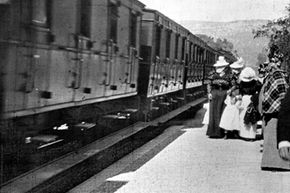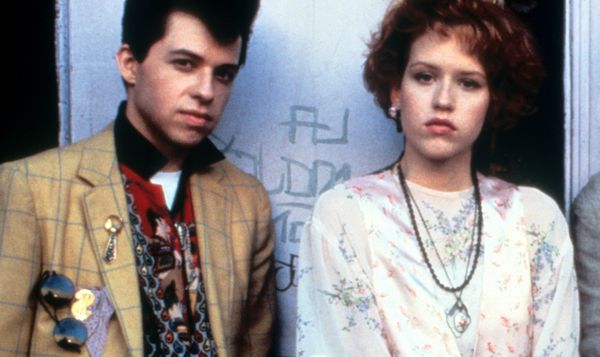The relatively short history of film is packed to the gills with urban legends, both true and false, so it shouldn't come as a surprise that one of the first-ever movie screenings is also the source of film's most long-standing legends. On Jan. 25, 1896, the Lumière brothers screened their short film "L'Arrivée d'un Train en Gare de La Ciotat" ("Arrival of a Train at La Ciotat Station") at the Salon Indien du Grand Café in Paris. It wasn't the very first showing of a film, but close enough -- the Lumières screened 10 similar shorts just a month earlier.
There were only a handful of people in the world who had seen a movie at this point, and it was probably the first time for everyone in this particular audience. And, so the story goes, they did not take it sitting down. On the contrary, they broke into a panic, screaming and running for their lives as the locomotive on the screen seemingly headed straight toward them.
Advertisement
"L'Arrivée d'un Train en Gare de La Ciotat" is similar to the Lumières' other films in that it is silent, very short (just 50 seconds) and depicts a straightforward, everyday scene. The films are all one continuous, unedited shot, filmed on a cinematographe, which is a combination camera, printer and projector. In this film, the camera is set up on the station platform and records an approaching train, which passes closely to the left of the camera and eventually stops to unload and reload passengers.
It's probably a good bet that everyone in the audience had witnessed an actual train pulling into a station. It's also safe to presume that the crowd wasn't a bunch of hayseeds -- this was most likely a sophisticated, urban group. But the shock of seeing this moving image on a screen was apparently so great that people took leave of their senses.
This account of chaos at the cinema has been around so long that it's often taken as an unquestionable fact. But some film historians -- notably Martin Loiperdinger and Tom Gunning -- claim to have found no mentions of panic in any firsthand accounts of that screening. There was definitely astonishment, they say, but no evidence that people tried to escape the building. Another film historian, Ray Zone, didn't necessarily believe the total-pandemonium version but did point out that the audience could have been affected by the fact that a runaway locomotive had crashed at a Paris station only a couple of months earlier.
This probably untrue legend has many purposes, say Loiperdinger and Gunning. It gives us a sense of how far our culture has come in a fairly short time; film is now second nature to us, but it was utterly shocking not much more than a century ago. We can also chuckle that this seemingly cultured audience was suddenly taken back to a near-primitive state. But even if it's an exaggeration, the idea behind it probably isn't too far off the mark.
Advertisement



